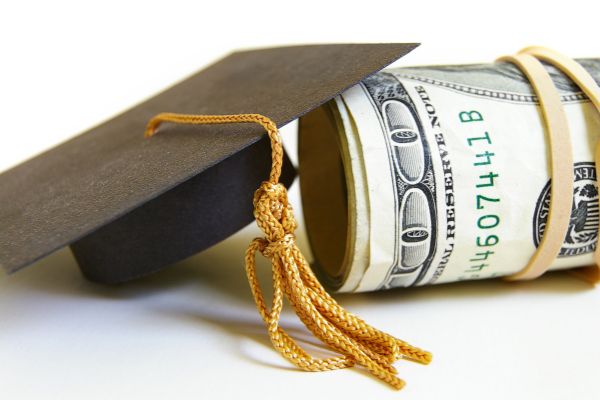![student-loan-01-min.jpg]()
At DebtStoppers, we believe in giving our clients a real chance at a fresh financial start — not just restructuring debt, but eliminating it when possible. As recently as September 2025 we secured a full discharge of $157,575 in federal student loans for a client via Chapter 7 bankruptcy. That result is not an outlier, our firm has a strong track record in aggressively pursuing and winning student loan discharge in appropriate cases.
Still, many borrowers believe that student loans are never dischargeable. That’s simply not true — but it is true that discharging them requires a different process than other debts. To help you understand your options, we’ll explain:
-
The major forms of student-loan relief outside bankruptcy (forgiveness, administrative discharge, income-driven repayment, public service cancellation, disability discharge, etc.), and
-
How student loan discharge in bankruptcy works today — especially under the newer DOJ/DOE Guidance that has changed how the government handles these cases.
How Student Loan Discharge Works under the New Department of Education Guidance
Although the statutory framework (11 U.S.C. § 523(a)(8)) has not changed, the practical pathway for discharging federal student loans in bankruptcy has become more accessible thanks to the November 2022 DOJ/DOE Guidance. Department of Justice+2Western District Court+2
Below is an overview of how the current process works:
-
You must file an adversary proceeding
- When you file a bankruptcy case (Chapter 7 or Chapter 13), student loans are not automatically discharged, unlike credit card or medical debt. You must separately initiate an adversary proceeding (a kind of lawsuit within the bankruptcy) under Bankruptcy Rule 7001(6) to ask the court to find your student loans nondischargeable under § 523(a)(8).
- In that adversary, your burden remains to prove "undue hardship" — but under the new regime, the government may agree to the factual findings if certain criteria are met.
-
The debtor completes an Attestation form
- Once the case is "on notice," the Department of Justice (through its U.S. Attorney's offices) requests that the debtor furnish a detailed attestation of your financial circumstance.
- For evaluating current expenses, the DOJ guidance directs use of the IRS Collection Financial Standards (national and local) as a benchmark for what counts as "reasonable" living expenses. If a debtor's actual expenses exceed those benchmarks, they must provide justification. Department of Justice+1
-
The attestation will show whether certain "presumptive" conditions exist (one of the following):
- Loans in repayment for 10+ years (excluding in-school deferments)
- Age 65 or older
- Disability or chronic injury/illness that limits ability to work
- Unemployment for at least 5 of the past 10 years
- Failure to complete the degree for which the loans were incurred
-
DOJ / DOE review and recommendation
- DOJ attorneys review the attestation (and supporting documentation) in consultation with DOE.
- If DOJ/DOE conclude the debtor satisfies the elements of undue hardship they are directed to agree to the necessary facts and recommend to the court that the loans be discharged (in whole or part).
-
The court still makes the final call
- In many cases under the new regime, courts accept stipulations and grant discharge, often without contested trials, especially when the facts are clear and well-documented.
The three core elements under the guidance
Although phrasing differs from circuit to circuit, the DOJ/DOE guidance aligns closely with the traditional “Brunner” test’s three-prong structure, while accommodating some flexibility. The elements are:
-
Present inability to repay while maintaining a minimal standard of living
The debtor’s allowed expenses (per IRS or justified actuals) should exceed or leave no meaningful surplus for loan payments.
-
Likelihood that the hardship will continue in the future
The debtor must show that their financial constraints are not temporary. The guidance provides rebuttable presumptions (e.g. age ≥ 65, long-term unemployment, long repayment history, disability, not obtaining the degree) as indicators of persistent incapacity.
-
Good faith in past repayment efforts
The debtor should show that, to the extent possible, they made reasonable efforts to pay, sought deferment or forbearance, applied for income-driven repayment, or otherwise engaged meaningfully with servicers or DOE. The guidance is careful not to penalize debtors who lacked full access to information, who faced servicer errors, or who attempted but failed to get relief.
Why the new guidance is a game-changer
-
The new protocol aims to standardize expectations for debtors and reduce uncertainty and unnecessary adversary litigation.
-
The burden of proof still rests on the debtor, but the pathway is now more navigable for qualified borrowers and DOJ is directed to be more collaborative in cases that meet the criteria.
Other Student loan debt relief options
Relief can take many forms. Some programs cancel debt entirely, others reduce payments to something you can actually manage.
Federal Forgiveness Programs
Public Service Loan Forgiveness and Teacher Loan Forgiveness are two of the most recognized paths. These programs are classic examples of student loan forgiveness debt relief, rewarding years of work in public service or education. For those who qualify, the results can be dramatic: large balances wiped away after years of service.
If you think you may qualify, it is worth checking carefully. Many people discover they are closer than they realized.
Income-Driven Repayment and Forgiveness
When income is low compared to debt, an income-driven repayment plan can be life-changing. Payments are tied to what you actually earn. After 20 or 25 years, the balance left over may be forgiven. This is why borrowers often call it student debt loan forgiveness, because it offers an end point, not endless payments.
It does not happen overnight, but it keeps families afloat and prevents default.
Student Loan Debt Relief Tax Credit
Taxes can play a role too. In some states, a student loan debt relief tax credit is available. That credit directly reduces your tax bill and frees up money to cover monthly loan payments. It’s easy to overlook, but if your state offers it, the benefit is worth claiming.
How to pay off and reduce student loan debt?
Forgiveness is not the only answer. Many borrowers want to know what they can do right now.
Consolidation and refinancing
Consolidation rolls multiple federal loans into a single payment. Refinancing, on the other hand, is usually done through a private lender to try for a lower interest rate. Both can help in the right circumstances. But beware: refinancing federal loans means losing federal protections. A student loan debt consolidation lawyer can explain exactly what you are giving up before you sign.
Strategies for paying off student loan debt
Clients often ask about methods that really work. The snowball strategy focuses on clearing small balances quickly. The avalanche strategy attacks high-interest loans first. Both can work, but the right one depends on your personality and finances.
Understanding how to pay off student loan debt means picking a system you can stick with. For some that means automatic payments. For others, it’s seeing progress quickly with small victories.
How to reduce student loan debt faster?
Want to finish sooner? Look for ways to add even small extra payments. Tax refunds, overtime, or side gigs can all make a dent. Employer repayment benefits are another growing tool. Over time, consistency matters most. Borrowers who stay focused on paying off student loan debt learn how to reduce student loan debt more quickly than they expected.
Does student loan debt die with you?
Another common question: does student loan debt die with you? Federal loans are discharged when the borrower passes away, and Parent PLUS loans are forgiven if the parent or student dies. Private loans are different: some are canceled, others are not. Families need to review the terms carefully.
Negotiating with student loan debt collectors
Falling into default can trigger aggressive collection tactics. Student loan debt collectors may call, write, and even threaten legal action. But negotiation is possible. Sometimes collectors will settle for less than the full amount. Borrowers who work with professionals usually get better terms and far less harassment.
Legal help with student loan debt
Attorneys for student loan debt can be a lifeline when the system feels overwhelming.
What can a student loan debt lawyer do?
A student loan debt lawyer can review your situation, outline all the relief programs you qualify for, and defend you in court if necessary. They can also stop wage garnishments and protect your rights against unlawful collection practices.
Can a lawyer negotiate student loan debt?
The short answer is yes. People often ask: can a lawyer negotiate student loan debt? Lawyers negotiate with servicers every day and frequently secure settlements, lower payments, or improved repayment terms. This is where having someone with experience makes all the difference.
Choosing the right attorney for student loan debt
When choosing legal help, look for someone who specializes in this field. A trusted student loan debt attorney or attorney for student loan debt knows how to deal with both federal and private lenders. DebtStoppers has built its practice around helping people through tough financial situations through bankruptcy.
Whether you need a lawyer for student loan debt, a lawyer student loan debt specialist, or advice from a student debt loan expert, the right attorney can change your path. In some cases, a student loan debt consolidation lawyer may be the right fit. And in rare situations, a skilled attorney may even help you forgive student loan debt through settlement or program enrollment.
A Future Beyond Student Loan Debt
Carrying student debt loan can feel endless. But it doesn’t have to be permanent. Programs, repayment strategies, and legal protections exist. With help, you can take back control.
DebtStoppers has guided thousands of borrowers through the same challenges you may be facing right now. You are not alone. The first step is simply reaching out. The sooner you act, the sooner you can build a future where your money goes toward your goals, not your loans.

